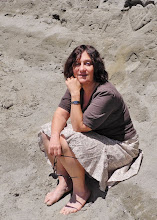 "I'm about to fling Ayn Rand from my bookshelves," I tell my daughter Anna.
"I'm about to fling Ayn Rand from my bookshelves," I tell my daughter Anna."Why, Ma?" She asks, a mug of coffee in one hand, coconut macaroon in the other.
"She's contaminating my other books with her virtue of selfishness and mantras on individualism. Rand has shared the same shelf with humanists Elie Wiesel, Viktor Frankl and Karen Armstrong. I'm throwing her out."
"Ayn Rand's flying off store bookshelves these days, Ma. She's in demand. Let her stay, please. Besides, it's good to have dissenting views. Builds character. Let them all argue with one another."
"She's toxic," I maintain. "Look at what's become of this country. Capitalism. Greed. Each man for himself. What will happen to those in need? Social welfare? The arts? I'm scared to think—"
But I think back to the past, and what initially attracted me to her writing. Ayn Rand might be a useful companion for anyone undergoing the painful process of litigation or mediation, especially if you're a classical musician or artist like Howard Roark in Fountainhead, possibly facing the dismantling of your career. Rand's philosophy speaks:
Men have been taught that it is a virtue to agree with others. But the creator is the man who disagrees. Men have been taught that it is a virtue to swim with the current. But the creator is the man who goes against the current. Men have been taught that it is a virtue to stand together. But the creator is the man who stands alone.
A grueling day was spent in mediation. The mediator, a plucky middle-aged woman, relied on local newspaper clippings to support her arguments, supplied by the executioner. She held up a compilation of blog entries that was like Sunday School material, compared to what has circulated on the same subject since then, and unsuccessfully tried to scold the blogger. The media had been slanted in the direction of a local public figure, and the blogger stood up for himself. Little did the mediator know, a few years later, the dailies and "reporters" she relied upon would cease to exist. And the public figure, whose reputation was being fiercely protected, would wind up the subject of an exposé in the nation's leading paper.
I suppose I needed the staunch, individualism of Ayn Rand back then, at a time when I accepted selfishness as a virtue. But, no longer.
Ayn Rand - PBS


